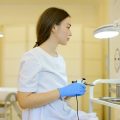Understanding Sun Damage in the British Climate
When most people think of sun damage, they imagine blazing beaches and scorching afternoons—perhaps somewhere far more exotic than Britain. However, living here has taught me that our famously unpredictable weather doesn’t shield us from the harmful effects of the sun. The British climate, with its ever-changing clouds and bursts of sunshine, often lulls us into a false sense of security. Many believe that overcast skies mean minimal UV exposure, but this couldn’t be further from the truth. Even on those classic drizzly days or when the sun seems hidden behind thick clouds, up to 80% of UV rays can still penetrate and reach our skin. I’ve personally experienced surprising sunburns on seemingly dull afternoons out in the park or during a stroll along the Cornish coast. It’s a common myth that we only need to think about sun protection during heatwaves or holidays abroad, but in reality, our skin accumulates damage over time—even on mild or cloudy days typical of British weather. Embracing the beauty of our green landscapes and cool breezes should go hand-in-hand with respecting the invisible risks posed by UV radiation throughout the year.
2. Recognising the Signs of Skin Damage
British summers often tempt us outdoors—into lush gardens, onto breezy beaches in Cornwall or Brighton, and even just for a spot of afternoon tea on the patio. While these moments are quintessentially British, they can sometimes leave behind more than happy memories: subtle changes to our skin that may signal sun damage. Recognising these early signs is crucial for prevention and timely intervention.
Freckles, Moles, and Texture Changes: What to Watch For
Spending a weekend tending to my allotment in the Cotswolds, I’ve noticed my fair skin gathering new freckles across my nose and cheeks. For many of us in the UK, especially those with lighter complexions, freckles can appear after even moderate sun exposure. Similarly, family seaside holidays in Devon have left me checking for any new moles or patches of rough skin after days spent by the water.
Telltale Signs After Outdoor Activities
| Sign | Where It Appears | Personal Experience |
|---|---|---|
| New Freckles | Face, shoulders, arms | After a summer picnic in Hyde Park, I spotted extra freckles along my collarbone. |
| Mole Changes | Anywhere on the body | A mole on my forearm looked slightly larger after a week’s hiking in Lake District. |
| Texture Changes (roughness/dryness) | Nose, forehead, backs of hands | Post-gardening sessions left my hands feeling rough and patchy despite using gloves. |
What to Do If You Notice Changes
If you spot a new freckle that looks darker than your others or a mole that seems to have changed shape or colour following a spell in the sun, don’t brush it off as just a “holiday souvenir.” The classic British approach might be to carry on with a cup of tea and hope for the best, but when it comes to skin health, early action is best. Keep a diary of any changes you notice, and if something seems unusual or doesn’t fade after a few weeks indoors, book an appointment with your GP or local pharmacist. Catching potential problems early can make all the difference—so let’s keep enjoying our lovely British outdoors while staying one step ahead of sun damage.

3. Prevention Strategies That Fit British Lifestyles
When it comes to sun protection in Britain, it’s easy to assume our famously unpredictable weather means we’re safe from sun damage. However, even on overcast days, UV rays can still reach our skin and accumulate over time. So, adopting practical prevention strategies that fit seamlessly into everyday British life is essential, whether you’re enjoying a lazy afternoon in a pub garden or rambling through the Lake District.
UK-Friendly Sunscreen Habits
Unlike tropical destinations, the UK’s sunlight might feel milder, but don’t be fooled—UVA and UVB rays are ever-present. Choose a broad-spectrum sunscreen with at least SPF 30 and remember to apply it generously to all exposed areas, even when it’s cloudy. Make it part of your morning routine, just like brushing your teeth. Keep a travel-sized bottle in your bag or glovebox for top-ups during impromptu park picnics or coastal strolls. For families, look out for hypoallergenic options suitable for sensitive skin and water-resistant formulas for those spontaneous dips in the sea or river.
Choosing Protective Clothing with Style
Fashion and function go hand-in-hand when it comes to sun safety in Britain. Lightweight, long-sleeved shirts or blouses, wide-brimmed hats (think classic bucket or fedora styles), and sunglasses with UV protection are all effective barriers against harmful rays. Brands now offer stylish UPF-rated clothing that looks at home both in city centres and on country paths. Don’t forget a scarf or wrap—ideal for draping over shoulders during an outdoor lunch or while queueing at summer festivals.
Sun-Safe Routines for Every Season
Sun protection isn’t just for heatwaves. In spring and autumn, when the air is cooler but UV levels can still be moderate to high, build habits like seeking shade between 11am and 3pm and planning walks or activities outside these peak hours. During winter walks on bright days—especially in snowy landscapes—UV reflection can increase risk, so keep up sunscreen use and wear protective layers. When heading to the pub garden after work or joining friends for a countryside hike, make sun safety as natural as grabbing your coat before leaving home. Small changes add up: choosing tables under parasols, wearing a cap while gardening, or reapplying sunscreen before cycling through the park—all help protect your skin without disrupting your quintessentially British routines.
4. The Importance of Regular Skin Checks
Integrating regular skin checks into your personal wellness routine is an empowering step towards preventing and detecting skin cancer early, especially here in Britain where overcast skies can lull us into a false sense of security. Despite the often grey weather, harmful UV rays still penetrate clouds, making vigilance essential all year round.
Self-examination is surprisingly straightforward and takes only a few minutes each month. The key is to become familiar with your own skin so you can notice any changes quickly. The NHS recommends using the “ABCDE” rule to spot potential melanoma:
| Feature | What to Look For |
|---|---|
| A – Asymmetry | One half of the mole doesn’t match the other |
| B – Border | Edges are irregular, ragged, or blurred |
| C – Colour | Varied shades of brown, black, or pink |
| D – Diameter | Larger than 6mm across (about the size of a pencil rubber) |
| E – Evolving | Any change in size, shape, or colour over time |
The NHS encourages everyone to check their entire body—scalp, back, soles of feet, and between fingers and toes included. If you notice anything unusual or new, it’s wise to book an appointment with your GP promptly. Many surgeries now offer telephone consultations or digital photo uploads for initial assessments, making it even easier to seek advice without delay.
As part of public health initiatives, the NHS runs awareness campaigns each summer, reminding Britons not just to wear sun protection but also to look after their skin proactively. Incorporating self-checks alongside annual GP visits—especially if you have fair skin, lots of moles, or a family history of skin cancer—can give you peace of mind and ensure that any issues are caught early when they’re most treatable.
5. Early Intervention: British Healthcare Approaches
Spotting a suspicious mole or patch of skin can feel unsettling, but early intervention is where the British healthcare system truly shines. If you notice a mole that’s changed shape, size, or colour, or if there’s bleeding or itching, it’s vital to act promptly. The first step is to contact your local GP surgery—don’t be shy about booking an appointment, as GPs are well-versed in assessing skin changes and take concerns about sun damage seriously.
Once you’ve seen your GP, they’ll examine the area closely. If anything looks concerning, you’ll be referred quickly to a specialist through the NHS two-week wait pathway for suspected skin cancer. This swift referral process is one of the NHS’s greatest strengths, ensuring that people across Britain have rapid access to dermatologists for further assessment and, if needed, a biopsy.
During this journey, you’re not alone. British healthcare teams are experienced in guiding patients with empathy and clarity—from the initial consultation at your local surgery to support during specialist appointments. Support services like Macmillan Cancer Support and local NHS helplines offer practical advice and emotional reassurance throughout the process. The key takeaway? In Britain, acting early opens doors to effective treatment and better outcomes—so trust your instincts and never hesitate to seek help if something on your skin doesn’t look right.
6. Community Awareness and Sun Safety Culture
Across Britain, the collective effort to prevent sun damage and skin cancer is growing stronger, thanks to local campaigns, school-based education, and the sharing of personal experiences. Community-driven initiatives like “Slip, Slop, Slap” days at public parks or seaside events not only raise awareness but also foster a sense of togetherness in taking sun safety seriously. British councils and charities frequently organise summer pop-up clinics and street stalls offering free sunscreen samples and skin checks, making protection accessible to all.
Education in Schools: Planting Seeds for Lifelong Sun Safety
Embedding sun safety education into the curriculum at primary schools has become an important step towards cultural change. British teachers introduce children to the importance of hats, shade, and high-factor sun cream through interactive lessons and playful activities. The sight of youngsters donning wide-brimmed hats on school trips or applying sunscreen before outdoor PE lessons has become increasingly common—a small but powerful sign that future generations are learning habits their parents might never have known.
Personal Stories: Inspiring Change Through Experience
The power of storytelling cannot be underestimated in nurturing a culture of prevention. When Britons share their own journeys—be it a scare with an unusual mole or the comfort found in regular dermatologist visits—they demystify the risks and inspire others to take action. Social media platforms, community groups, and local newspapers have become safe spaces for these narratives, making sun safety feel both relevant and achievable.
Nurturing a Culture of Prevention
Together, these efforts are weaving sun safety into the fabric of British life. Celebrating cloudy days as opportunities for protection rather than complacency, embracing sun-safe fashion, and championing conversations about skin health all contribute to a new cultural norm—one where prevention is as much about shared responsibility as it is about personal care. By supporting local campaigns, encouraging honest dialogue, and empowering young people through education, Britain is steadily building a community that values skin health for generations to come.


